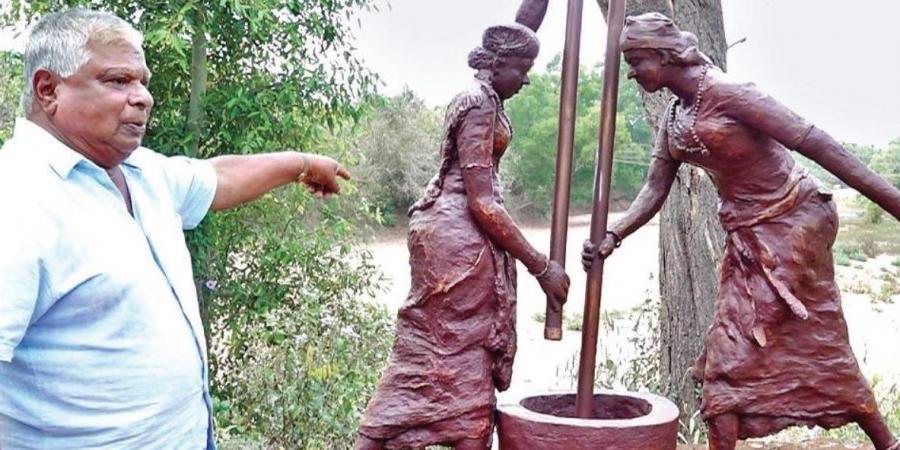Under the guidance of textile expert Pavithra Muddaya, 40 women have tried their hands at needlework on furnishings, which will be up for sale online

Bengaluru :
In February, when Pavithra Muddaya, founder of Vimor, identified marginalised women in Gadag who would be trained for three months, she hadn’t imagined that the works by “raw hands” would be up for sale six months down the line.
Forty women worked their magic of English hand embroidery on the dead stock bought from weavers. Cushion covers, runners, curtains, stoles, quilts, and masks will be up on the virtual pop-up on September 12. It is organised by make up artist Dipthi Aashok and image evangelist Bia Sandhu Taneja.

It all started with Muddaya wanting to help women affected by the flood in North Karnataka. One thing led to another and she finally zeroed-in on a marginalised group in Gadag.
In February, two experienced trainers, Robert and Kairul, started teaching these women, and despite the pandemic and subsequent lockdown, one of the trainers continued with the classes as and when it was possible.
“A second batch was also started during the lockdown, because we simply couldn’t say no to a group which was so enthusiastic to learn. Next, we plan to hold a similar session with the differently-abled,” says Muddaya, who has just been informed that the Department of Women and Child Development has given them a building, Strishakti Bhavan, where classes can be conducted.
While everyone has been asking about sarees, which Vimor has been known for considering that even former prime minister Indira Gandhi bought sarees here, Muddaya didn’t want to overwhelm women who were newly introduced to this art.
“The weavers, though, worked through the lockdown with whatever yarn they had. In fact, they now call them ‘corona sarees’,” she says with a laugh. But back to training women, Muddaya had hoped that it would create a ripple effect.
“In fact, our initial idea was to hold three-month training sessions where women would be trained for second month and the third would be a teacher training programme which would enable them to go to other villages and teach others,” she says.
Finding that the pandemic has put lot of people on the back foot, both financially and morally, Aashok points out that this is an attempt to step up the morale. “A part of the proceeds will be going to the Vimor Foundation, because we want to empower weavers through training, mentorship,and support,” she says, adding that the biggest challenge is curating this pop up, which will feature clothes and lifestyle products. They are doing it on Zoom, which is a first for the team.
source: http://www.newindianexpress.com / The New Indian Express / Home> Cities> Bengaluru / by Vidya Iyengar / Express News Service / August 24th, 2020



